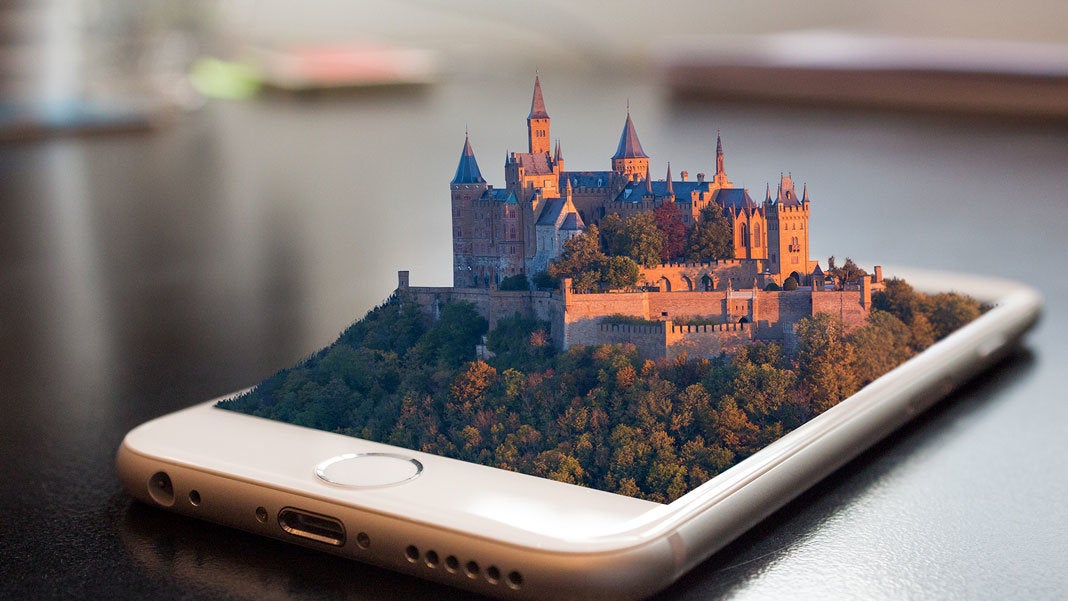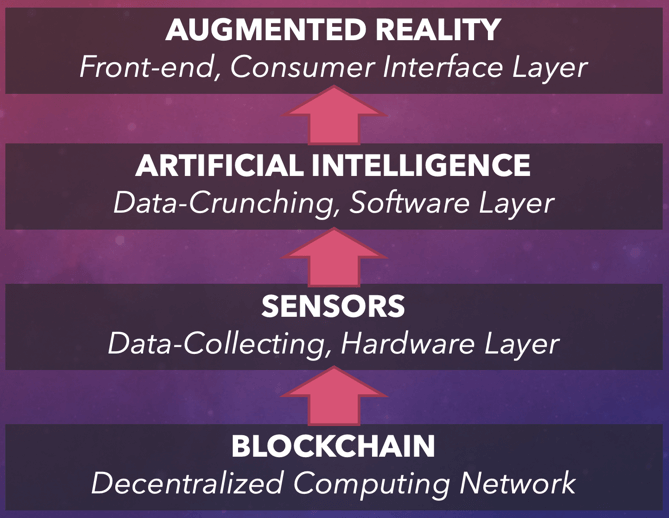Peter Diamandis: Spatial Web, Web 3.0
The Four Converging Technologies Giving Rise to the Spatial Web boundaries between the digital and physical are beginning to fade....... Web 3.0, or the Spatial Web ...... version 1.0, static documents and read-only interactions limited the internet to one-way exchanges. Web 2.0 provided quite an upgrade, introducing multimedia content, interactive web pages, and participatory social media. ..... mediated by two-dimensional screens. ............. the rise of Web 3.0, riding the convergence of high-bandwidth 5G connectivity, rapidly evolving AR eyewear, an emerging trillion-sensor economy, and powerful artificial intelligence.
....... freeing our eyes from the tyranny of the screen ....... convergence of AR, AI, sensors, and blockchain ...... graphics processing units (GPUs)—electric circuits that perform rapid calculations to render images ........ blockchain can now enable distributed GPU processing power, and blockchains specifically dedicated to AR holographic processing are on the rise. ........ cameras and sensors will aggregate real-time data from any environment to seamlessly integrate physical and virtual worlds ....... In healthcare, smart AR glasses will provide physicians with immediately accessible and maximally relevant information (parsed from the entirety of a patient’s medical records and current research) to aid in accurate diagnoses and treatments, freeing doctors to engage in the more human-centric tasks of establishing trust, educating patients and demonstrating empathy. ............. AR will converge with AI, sensors, and blockchain to multiply manufacturer productivity and employee experience. ....... digital guides superimposed on production tables will vastly improve employee accuracy and speed, while minimizing error rates. ........ Boeing brought Skylight’s smart AR glasses to the runway, now used in the manufacturing of hundreds of airplanes. Sure enough—the aerospace giant has now seen a 25 percent drop in production time and near-zero error rates. ........ Jaguar Land Rover, for instance, implemented Bosch’s Re’flekt One AR solution to gear technicians with “x-ray” vision: allowing them to visualize the insides of Range Rover Sport vehicles without removing any dashboards. ........ Perhaps one of the most profitable business opportunities, AR guidance through centralized AI systems will also serve to mitigate supply chain inefficiencies at extraordinary scale. Coordinating moving parts, eliminating the need for manned scanners at each checkpoint, and directing traffic within warehouses, joint AI-AR systems will vastly improve workflow while overseeing quality assurance. ............ “All these technologies that are coming together around artificial intelligence are going to augment the capabilities of the worker and that’s very powerful. I call it Augmented Intelligence. The idea is that you can take someone of a certain skill level and by augmenting them with artificial intelligence via augmented reality and the Internet of Things, you can elevate the skill level of that worker.”
.........Perhaps the most heartening outcome of the AI-AR convergence is that, rather than replacing humans in manufacturing, AR is an ideal interface for human collaboration with AI. And as AI merges with human capital, prepare to see exponential improvements in productivity, professional training, and product quality. .......... Stacked convergence of blockchain, sensors, AI and AR will disrupt almost every major industry.
......... Because AR requires much more compute power than typical 2D experiences, centralized GPUs and cloud computing systems are hard at work to provide the necessary infrastructure. Nonetheless, the workload is taxing and blockchain may prove the best solution. ........ “I predicted that 90% of computing would eventually reside in the web based cloud… Otoy has created a remarkable technology which moves that last 10%—high-end graphics processing—entirely to the cloud. This is a disruptive and important achievement. In my view, it marks the tipping point where the web replaces the PC as the dominant computing platform of the future.” ............. our future of brick-and-mortar retail will largely lean on blockchain to create the necessary digital links. ..... distributed computing power with blockchain networks like RNDR will democratize AR, boosting global consumer adoption at plummeting price points.





No comments:
Post a Comment